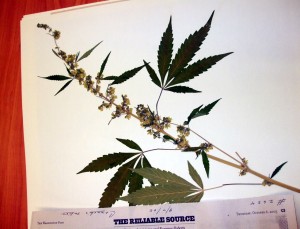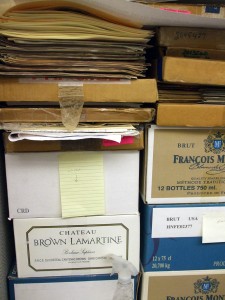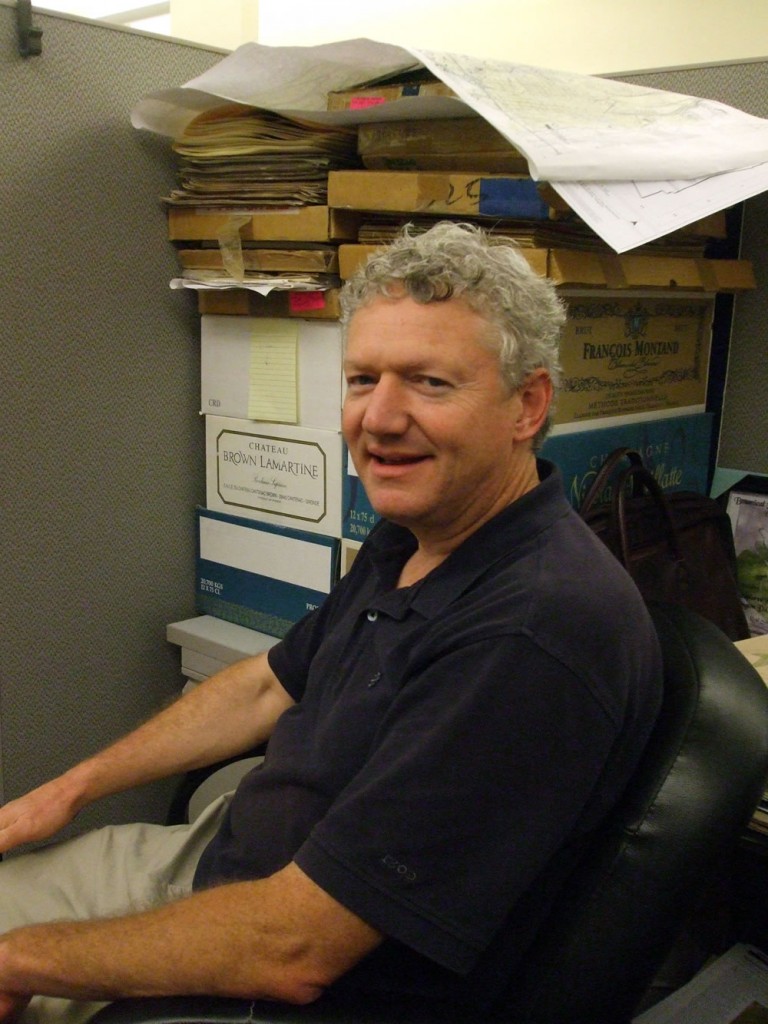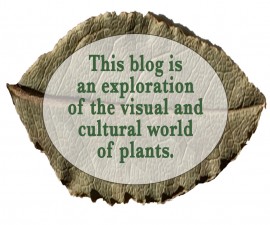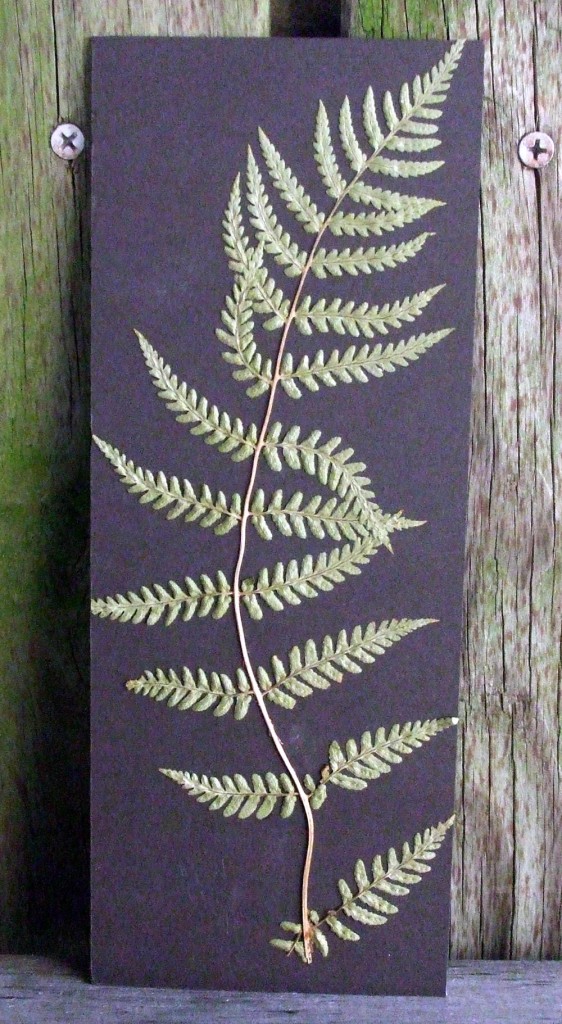I found historic type specimen and unusual plant material at the City of Alexandria, VA herbarium. While I had hoped to get into 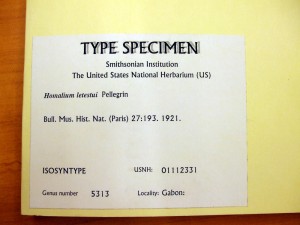 the United States National Herbarium at the Smithsonian to see historic specimen, I got to see some of what I was hoping for here because of sharing that always occurs among herbaria.
the United States National Herbarium at the Smithsonian to see historic specimen, I got to see some of what I was hoping for here because of sharing that always occurs among herbaria.
This label is for a plant specimen that’s not only from the famous national herbarium, but it’s also a “type specimen” (from Paris, 1921) which indicates it’s the best possible representation of that plant. It’s the reference point for scientists when attempting to identify plants. Type specimen are among the most valuable pieces in an herbarium.
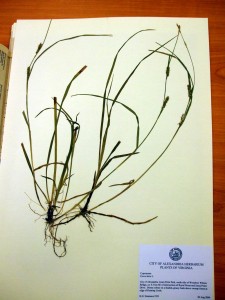 The specimen to the right was collected by Rod Simmons, who at the time was the City’s Natural Resource Specialist. Each herbarium develops its own label, but they all generally include the date of collection, collector’s name, scientific (latin) name of the plant, the family that plant belongs to and some collection information like location conditions, which help when identifying plants in the future.
The specimen to the right was collected by Rod Simmons, who at the time was the City’s Natural Resource Specialist. Each herbarium develops its own label, but they all generally include the date of collection, collector’s name, scientific (latin) name of the plant, the family that plant belongs to and some collection information like location conditions, which help when identifying plants in the future.
This plant is in the Sedge (Cyperaceae) family, which grow worldwide.
There are large seeds like coconuts and other formations of plant material that need special handling when collecting them and when preserving them for long term study.
Most plants though, are collected and dried with printed or unprinted newsprint, and well ventilated botanical cardboard (which is exactly what I use). Below is picture of a specimen that has identification information on the newsprint, and is waiting to be moved to storage. Also pictured below and some specimen waiting to be organized.
.
.
.
.
.
.
.
.
.
The trip to this lovely, historic town was long and hot and did not involve a single decent snack, but the people were amazing and the filtered water was refreshing and free. And the director of the herbarium couldn’t have been more kind, more knowledgeable, better connected, or more professional. It was well worth the trip! Thanks, Rod!

